A LIFETIME OF LAMBRETTA WITH A FEW RECORDS ALONG THE WAY
Plenty has been written in the scootering press about Frank Osgerby over the years and rightly so with that he has achieved. From circuit racing to record breaking Frank has done it all – he’s not only raced Lambretta but has been instrumental in developing and tuning them too. Here are the highlights of his 50-year career.
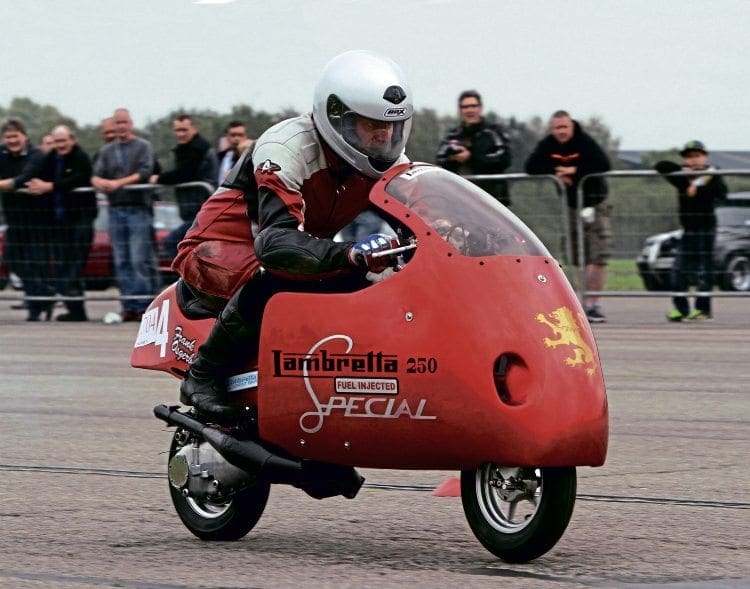
Not how it should have started
Frank Osgerby first became interested in Lambretta scooters while attending a merchant navy training school in Hull. It was the mid-1960s and not only did the landlady’s son own one but so did most of his friends. Keen to learn more, Frank would spend most dinner times staring in to the front window of Miles, Hull’s biggest Lambretta dealer. With a row of SX 200s lined up on display he dreamed of the day when he would own the finest model Innocenti produced.
Frank constantly reminded his parents that investing in a Lambretta would help out no end with his quest in to adulthood. After much persuasion they gave in to his demands and bought him one on his 16th birthday in 1967. While Frank was delighted at finally becoming a Lambretta owner, it wasn’t quite how he had imagined it. The Lambretta in question, a pale blue Li 150 Series 1, wasn’t his first choice and certainly not the SX 200 that he craved for. Nevertheless Frank was now a Lambretta owner and though the humble Li 150 had its faults it would serve him well until he had enough money to upgrade it.
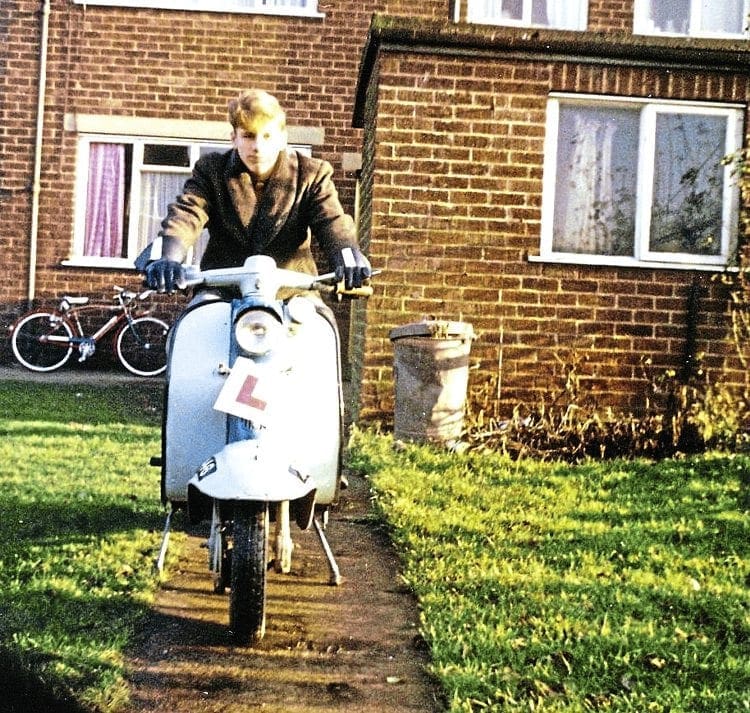
Two years later and now working full time, Frank finally had sufficient funds to purchase a better machine, opting to buy a second hand blue and white SX 200. With an abundance of power and speed, not to mention improved handling and braking, it was a far cry from the old Series 1. Now keener than ever, Frank joined the Lambretta Club of Great Britain and started to attend events where he could. At the same time subscribing to Scooter World magazine he was amazed by how many sport-orientated events for scooters were being reported. One of the first sporting events Frank attended was the Fulbeck sprint in 1972.
Though he recalls admiring all the full-bodied Lambrettas in various states of tune there was one machine that caught his eye. This was the radical full fairing sprint Lambretta of Fred Willingham (see Scootering edition 360). It looked impressive and its performance matched it looks — this was the day Fred Willingham achieved the first ever sub-14 second quarter mile by a Lambretta. Though Frank was only a spectator, the memory of what he saw was firmly etched in his mind and would play an important part in his racing future.
Offshore racer
Frank was keen to have a go at track racing – something he had watched frequently at his local circuit, Cadwell Park. Unfortunately he was unable to take part because his job in the merchant navy meant he was away at sea for months at a time. Finally in 1976, having got a job on land, the first thing he thought about was going racing. Having acquired a tatty Li 150 Series 3 a couple of years earlier from a neighbour, Frank’s racing career could begin in earnest. Not one to be put off and keen to jump in at the deep end the idea was to build a Group 6 special. Armed with an angle grinder and various cutting tools the Li 150 was quickly dismembered. The original lump was dumped in favour of an SX 200 engine even though it would stay in a basic state of tune. Along with best friend Dave Briggs, who had acquired an old Group 6 Lambretta, he set off for the 1976 Isle of Man scooter week to gain some racing experience.
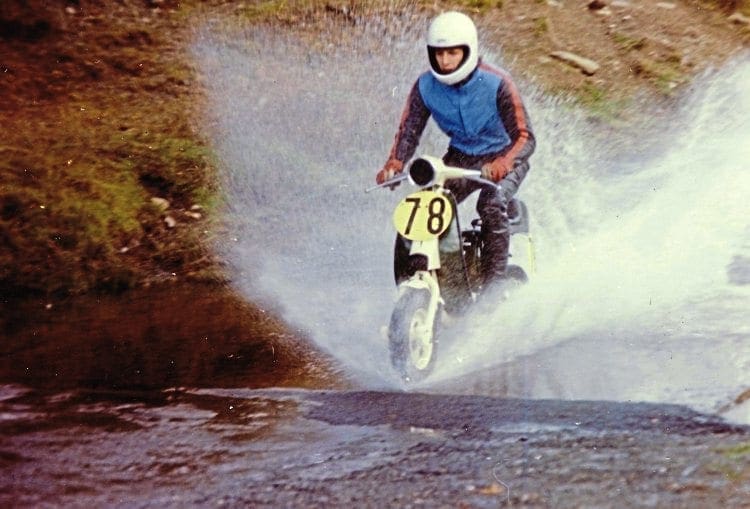
Soon he began to read books on two-stroke tuning and the theory behind it. Openly admitting to not having a clue what he was doing, Frank was determined to learn one way or another. He started off with some basic tuning and basic was the word. Polishing the inlet and exhaust port and fitting a 30mm Dellorto carburettor was as far as he got. Even so with the excess weight removed and a few gearing changes, the Group 6 special was the fastest Lambretta he had ridden. Even if the engine was only producing slightly more power than it did when it left the factory it was still an improvement.
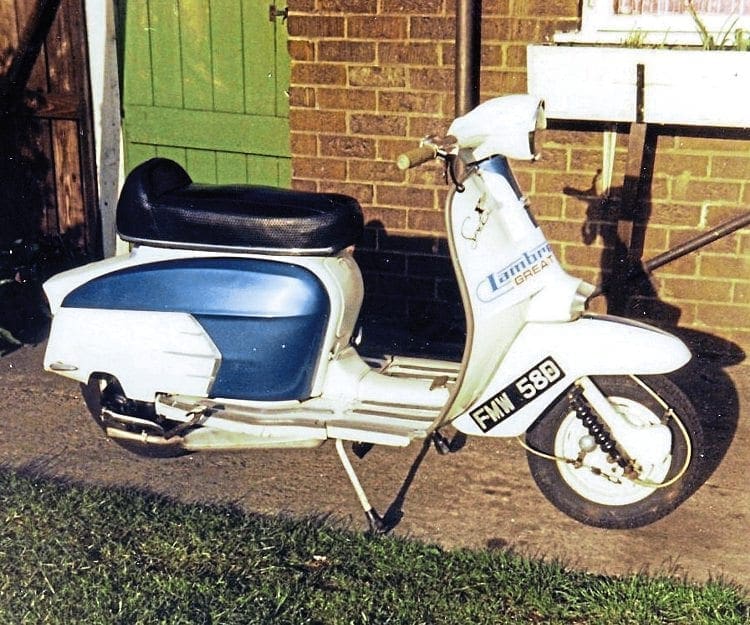
Having joined the FOBSC (Federation of British Scooter Clubs) Frank would race all over the country, competing in circuit racing, twisty sprints and the odd hill climb. In 1978 the LLRT (Leicester Lambretta Race Team) organised a straight line sprint at Long Marston airfield (later to be called Avon Park) which Frank entered. Six years after being a spectator at the sprint meeting at Fulbeck, Frank was now competing instead. Though his best time was a modest 17.1 seconds for the quarter mile he knew this could be improved upon with a few tweaks. Several weeks later at Santa Pod, Frank managed a 16.5 second run. There was no doubt that these two meetings had started to change Frank’s outlook for his racing career in the future. All he had to do now was keep making those changes.
Take off
Though Frank enjoyed circuit racing, after three years he was still struggling to move towards the front end of the grid. Even so, he continued to develop the engine and his tuning skills any way he could. With a Kawasaki H2 piston fitted the capacity was raised to 230cc while it now breathed through a 34mm Amal Mk II carburetor which had recently been introduced to the market.
Around this time Frank met motorcycle racer Chris Mehew, a very talented engineer and two-stroke tuner who eventually went on to work for some of the world’s top racing teams and riders. He taught Frank new methods of tuning – particularly when it came to exhaust and expansion pipe design. This was the area Frank was able to exploit the most in his quest for more power.
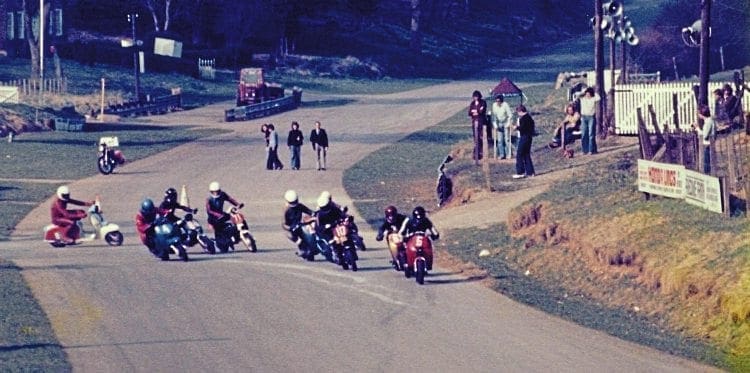
During 1979, Frank continued circuit racing but became more interested in sprinting. Having won several meetings throughout the year while at the same time getting his quarter mile time down to a very respectable 15.4, the inevitable happened. He left the FOBSC to join the NSA (National Sprint Association) during the winter and from now on would concentrate all his efforts purely on sprinting. This would mean significant changes not only to the Lambretta but also the way Frank went about tuning it. It was a challenge he was more than looking forward to.

At Frank’s first NSA meeting he bumped into Fred Willingham, the man he had watched break all those Lambretta records years earlier. Though Fred had moved on to sprinting motorcycles he was still interested to see a new Lambretta out there. They quickly became friends and Fred urged Frank on to break all his Lambretta records that had stood for almost a decade by this time.

By 1981, Frank’s times had plateaued. He was constantly running in the low 15 second bracket and he couldn’t seem to go faster. He had thought about running the Lambretta on methanol this remained just an idea until one day a package arrived. This contained a new version of the Jet Speed fuel injector, a handful of methanol jets and a note from Wal Phillips saying “try this out for the rest of the season”. Frank was surprised but happy — it was the push he needed to make the conversion.
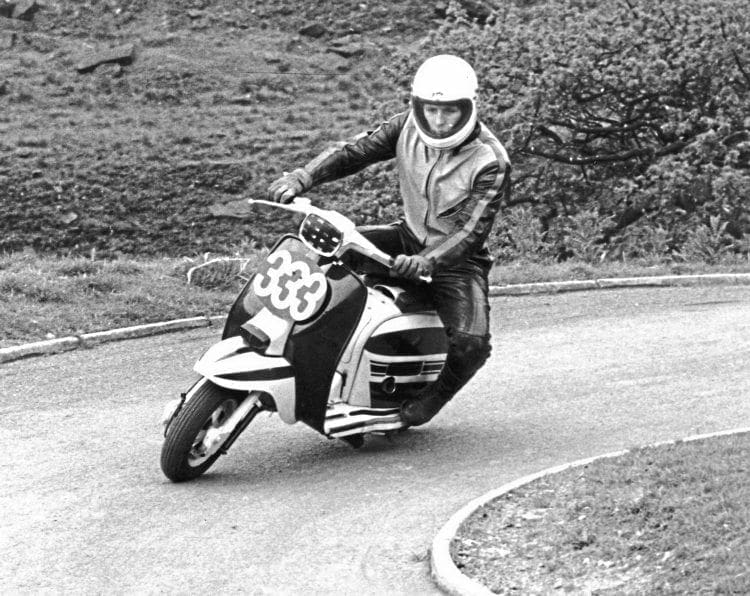
With the head skimmed to raise compression, he set about trying to understand the strange characteristics of a methanol-burning engine. Despite the steep learning curve, Frank’s times soon came tumbling down. By the end of the 1981 season his best time stood at 14.5 seconds for the quarter mile; he was only the third person to ever achieve this feat. Not only that, Frank had broken two course records, won the NSA championship and taken one of Fred Willingham’s British records to boot. However, if he wanted to go that bit faster things would have to develop further. It wouldn’t be the engine that would be worked on this time though.
All the fun of the fairing
Frank’s ultimate goal was to top 100mph and break longer distance records. The engine was now producing more power and was proving reliable so the next logical step was to work on the scooter’s aerodynamics. Acquiring what is commonly known as a dustbin fairing, originally intended for a motorcycle, Frank set about modifying it to fit the Lambretta’s shape. The result was impressive; all it needed now was the performance to match.
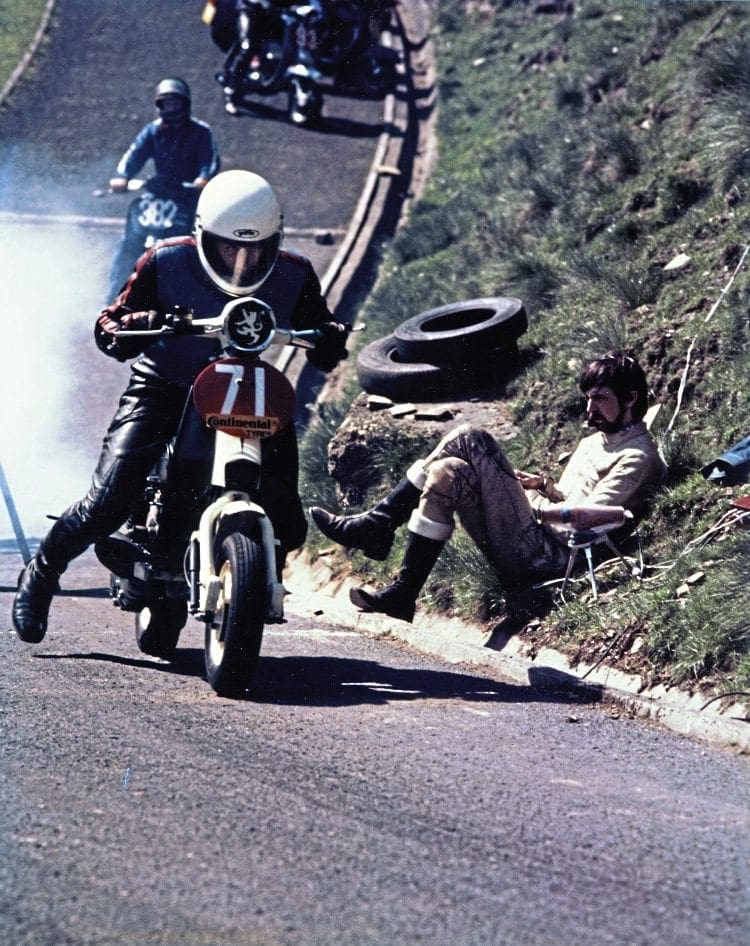
Though there was a slight gain of around 6% it wasn’t enough and certainly not as much as Frank thought he would get or would have liked. Although the Lambretta could cut through the air more easily, the turbulence behind him was now causing problems. Even so at the 1982 British records meeting at Elvington airfield Frank finally broke the 100mph barrier. He established a new flying quarter mile record of 101.75mph and a best one-way run of 103.21mph too. Frank’s decision to use a front fairing had proved correct and he was now firmly established him as the fastest man on a Lambretta in Britain. Not one to rest on his laurels, Frank wanted to go faster still but knew more aerodynamic development would be needed.
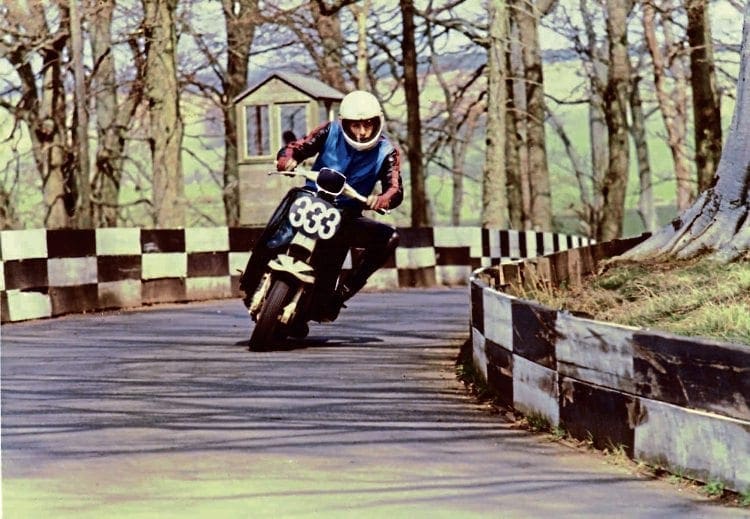
His next purchase was a set of fibreglass GP side panels, which he married to a motorcycle seat fairing. He hoped an enclosed body and tapered rear end would smooth out the airflow coming off the front fairing. If it worked correctly this would stabilise the machine and allow the engine to rev on even further as it became more aerodynamic at high speed. With the work done during the winter months, all that was needed now for the finishing touch was a nice new paint job.

Frank had met Brendan McNally in his first season of racing and they were now firm friends. With Brendan’s paint work business (Down Town Custom) going well, what better way to showcase his work than across Frank’s machine? Taking inspiration from the cover of an SX owner’s manual and finished in candy red and silver, it was a stunning transformation and one that still stands out today. The Lambretta looked fast even standing still.

Eagerly waiting to try out the new machine and sure that 1983 would be his best year, Frank meticulously prepared everything down to the last detail. He was duly rewarded with two new British records — the flying quarter mile at 103.93mph and the flying kilometre at 103.86mph. Frank’s personnel best one way time of the year was an impressive 105.02mph, further cementing his place as Britain’s fastest Lambretta rider.
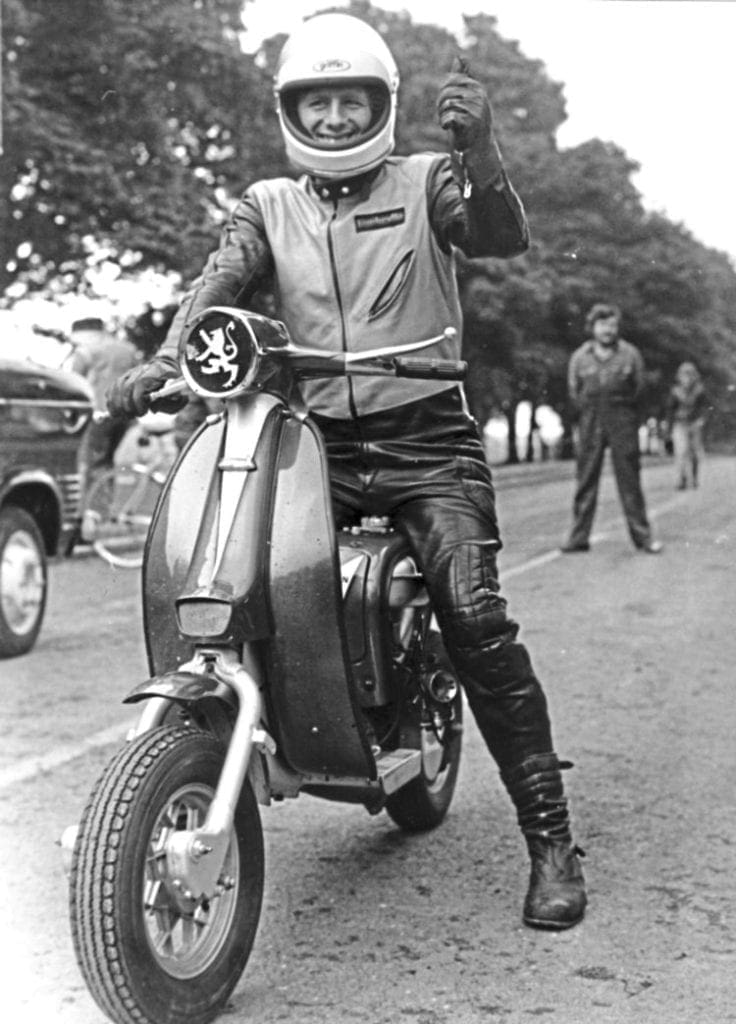
While the fairing had been successful for the high speed disciplines, it proved to be a hindrance over the quarter mile. It was a lot more difficult to tuck in so his riding position was now more over the rear wheel. While this was fine over a long distance, during the quick launch required for the quarter mile there was a tendency for the machine to wheelie or get dangerously out of balance. Though this came as a bit of a disappointment it did not deter Frank.
This is the end… well not quite
At the end of the 1983 season and with very little room to develop the Lambretta, Frank reconsidered his position. He had come a long way over the last eight years and was now at the top of his field. Having got married and started a family, Frank decided to hang up his leathers and retire from racing. Soon afterwards the Lambretta went on loan to the LPS museum in Devon where ironically it sat alongside Fred Willingham’s record-breaking Lambretta. After the breakup of the museum in the early 1990s, it was returned to Frank and lay forgotten in his garage for more than 15 years.
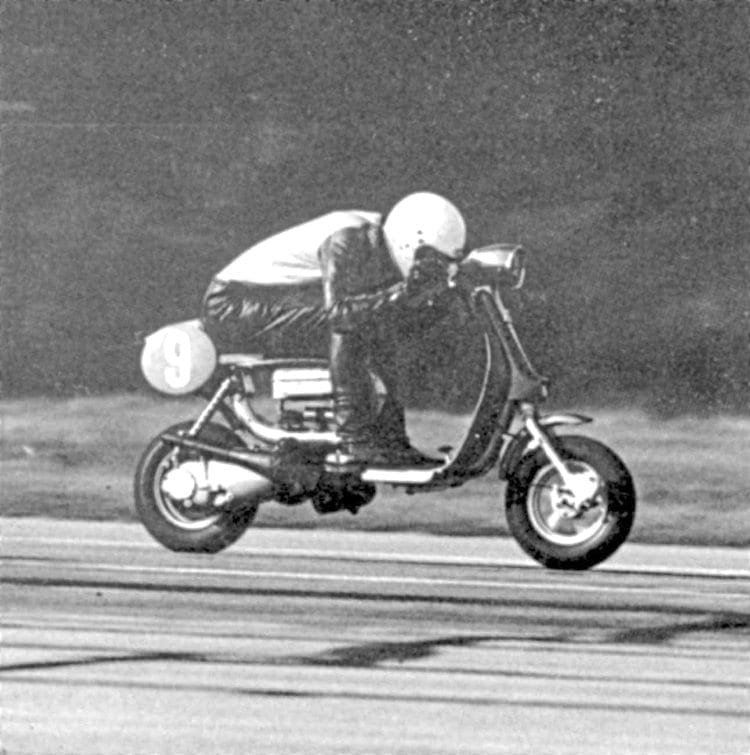
Attending Cleethorpes scooter rally in 2005 got Frank thinking again about his record-breaking Lambretta. Soon enough he began a full restoration to get it back up and running to its former glory. There was never any intention of racing it again, possibly due to age and a rather worried wife, but Frank was happy to run it up and down the road. Finally, in 2011, Frank did give it one run at the Scooter Shootout event at Elvington, the scene of some of his greatest moments.
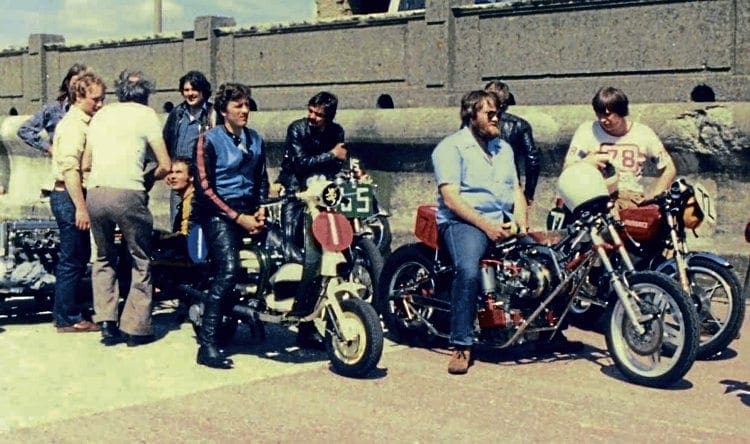
Though he only ran it up to 80mph it was a great sight to watch for a generation of scooterists who weren’t there to see it the first time round. In a final twist in the tale, the chassis minus the engine was loaned out during 2016 to Eric Cope. Eric’s sprint engine, which in theory had double the amount of power Frank’s had over 30 years ago, was installed. Yet despite this advantage the speeds and times were only fractionally better. Though Eric was hampered by poor conditions on the day, it just goes to show how good Frank’s performances were back then.
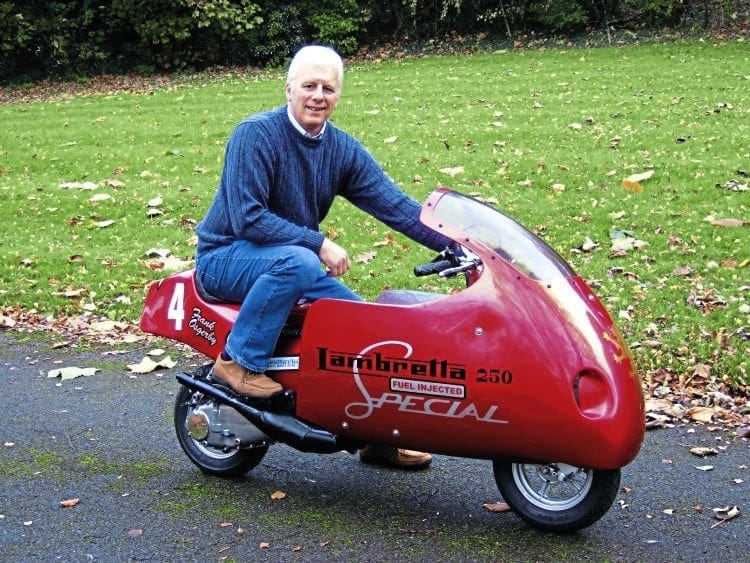
Though technology and development has moved on in the Lambretta world over the years and most of Frank’s original records have since been surpassed, nothing can be taken away from his achievements, from a time when performance tuning was done single-handedly within the confines of a cold garden shed and testing could only be carried out on the track.
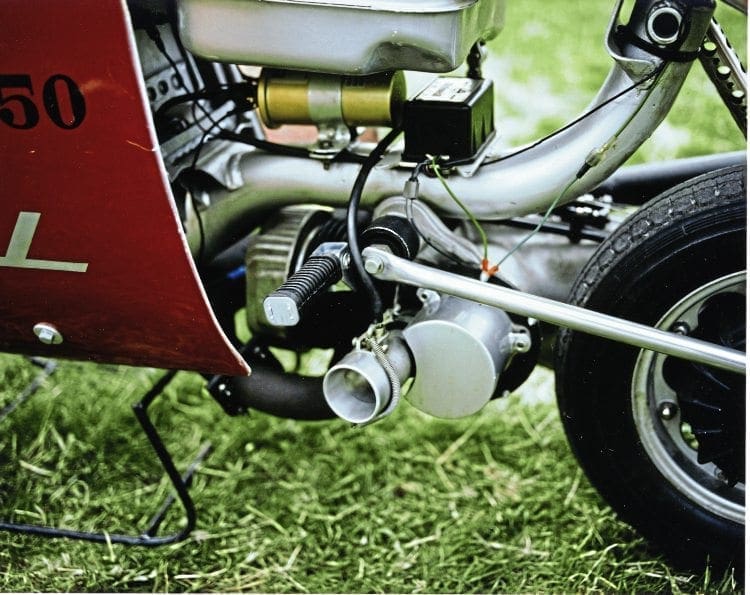
If there ever was a Lambretta hall of fame there is no doubt that Frank Osgerby would be one of the first to be inducted.
Words & Photographs: Stu Owen



